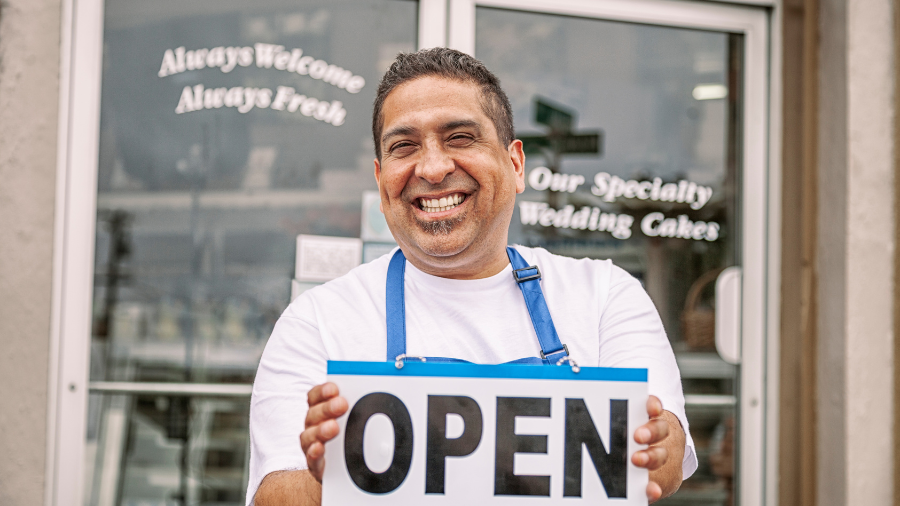Susan had poured her heart into her little boutique. Handmade candles, custom-scented soaps—each one crafted with care. But foot traffic was slow, online sales were even slower, and her marketing budget was barely enough to cover a few social media ads. Every post she shared felt like it was vanishing into the void.
She tried running discounts, tweaking her website, even handing out flyers at a local event. Nothing moved the needle. Meanwhile, bigger brands with deep pockets dominated her space. It felt impossible to compete.
Then one day, a local lifestyle blogger tagged her shop in an Instagram Story. Susan hadn’t even paid for it—the blogger had simply fallen in love with one of her candles. Within hours, messages flooded her inbox: Where can I buy this? Do you ship? Her follower count jumped. More importantly, sales started rolling in.
That’s when it clicked. People weren’t ignoring her business. They just didn’t trust an unknown brand. But they did trust the influencers they followed.
This wasn’t about celebrities pushing products for a paycheck. It was about everyday people—bloggers, content creators, niche experts—who had built real connections with their audience. And their recommendations carried weight.
For small business owners like Susan, influencer marketing was a game changer.
Why Influencers Work: The Power of Trust and Connection
When was the last time you bought something because an ad told you to? Probably not recently. But if a friend recommended a product—or someone you follow online raved about it—chances are you’d at least check it out.
That’s exactly why influencer marketing works.
Take Miguel, for example. He runs a small coffee roastery, pouring everything into sourcing the best beans and perfecting each roast. He spent months trying to get traction… FB ads, Google ads, even local newspaper listings. Nothing made a dent.
Then he decided to take a different route. Instead of pushing ads, he reached out to a handful of micro-influencers—coffee lovers who posted daily about their favorite brews. He sent them a sample, no strings attached. A few of them shared their honest thoughts in Instagram Reels and TikToks.
The response? Immediate. Comments rolled in: Where can I get this? This looks amazing! I need to try this!
Miguel wasn’t just selling coffee anymore—he was part of a conversation.
Influencers aren’t just digital billboards. They’re trusted voices. Their followers turn to them for recommendations the same way they’d trust a friend. And when an influencer introduces a product in a way that feels authentic, it doesn’t feel like an ad—it feels like a discovery.
For small businesses, that’s the difference between shouting into the void and actually being heard.
Choosing the Right Influencer for Your Brand
Not all influencers are created equal. And for small businesses, choosing the wrong one can feel like tossing money into the wind.
Sophie learned that the hard way. She runs a handmade jewelry shop and, hoping to boost sales, paid a well-known fashion influencer to promote her pieces. The influencer had over 500,000 followers, so Sophie expected a flood of orders.
Crickets.
A few likes, a couple of comments—but almost no sales. Turns out, that influencer’s audience was more interested in luxury brands than small-batch artisans. The promotion felt out of place, and followers scrolled right past it.
The right influencer isn’t just about big numbers. It’s about relevance, engagement, and trust.
Here’s how small businesses can find the right fit:
- Look beyond follower count. A micro-influencer with 10,000 engaged followers can drive more sales than an influencer with 500,000 passive ones.
- Match your audience. If you sell organic skincare, a beauty blogger who shares DIY self-care routines is a better fit than a general lifestyle influencer.
- Check engagement, not just stats. Are people commenting, asking questions, and acting on recommendations? An engaged audience is worth far more than vanity metrics.
- Watch for red flags. Fake followers, low interaction, inconsistent branding—if something feels off, it probably is.
A well-matched influencer doesn’t just promote a product. They weave it into their content naturally, making it part of their world. And that’s what gets real results.
Crafting a Win-Win Collaboration
Lina, a small-batch skincare brand owner, learned a crucial lesson about influencer marketing: it’s not about paying for a sales pitch—it’s about collaboration.
The first time she worked with an influencer, she made a rookie mistake. She sent over a detailed script, complete with product descriptions and a list of talking points. The influencer posted it, word for word. It felt stiff, forced, and—unsurprisingly—didn’t lead to much engagement.
The next time, she took a different approach. She let the influencer tell their own story. Instead of dictating the content, she encouraged them to use the product in their routine however they saw fit. The result? A genuine, unscripted skincare review that felt natural. Comments flooded in, asking about her products, and sales spiked.
Influencer marketing only works when it feels real. Here’s how small businesses can create collaborations that benefit both sides:
- Give influencers creative freedom. They know what resonates with their audience—trust them to showcase your product in a way that fits their style.
- Choose the right collaboration format.
- Product gifting – Great for micro-influencers who genuinely love trying new things.
- Affiliate partnerships – Influencers earn a commission for every sale, giving them real incentive to promote.
- Sponsored content – A direct payment for a dedicated post or mention (best when done with the right influencer).
- Co-created campaigns – Working together on something unique, like a limited-edition product or an exclusive discount code.
- Be clear, but not controlling. Set expectations on deliverables (e.g., “one Instagram post and two Stories”) while allowing room for creativity.
The best influencer partnerships don’t feel transactional. They feel like a natural extension of what that creator already shares. And that’s what gets audiences to pay attention.
Making It Work Without Blowing Your Budget

Many small business owners assume influencer marketing is expensive—something only big brands can afford. But that’s not the case. The trick isn’t spending more; it’s spending smart.
Take Daniel, who runs a local gourmet popcorn business. He didn’t have the budget to pay influencers thousands for a single post. Instead, he got creative.
He reached out to micro-influencers—food bloggers with a few thousand highly engaged followers. Instead of paying upfront, he sent them free samples. A few of them loved the product and shared it in their Instagram Stories. The result? A surge of orders, all without spending a dime on ads.
For small businesses, here’s how to make influencer marketing work on a tight budget:
- Start with product gifting. Many micro-influencers are happy to post in exchange for free products—especially if they genuinely love what you offer.
- Offer affiliate commissions. Instead of a flat fee, let influencers earn a percentage of each sale they drive. That way, you only pay for actual results.
- Negotiate creative deals. Some influencers will exchange content for a discount, a long-term partnership, or cross-promotion.
- Focus on engagement over reach. A micro-influencer with 5,000 engaged followers can drive more sales than a celebrity with a million disengaged ones.
It’s not about throwing money at influencers. It’s about building smart, strategic partnerships—the kind that actually drive sales, not just likes.
Measuring Success: What Actually Moves the Needle
Vanity metrics can be deceiving. Just ask Priya, who runs a boutique tea brand.
The first time she ran an influencer campaign, she focused on the wrong numbers—likes, comments, and follower count. The influencer she worked with had a massive audience, and engagement on the post looked great. But when she checked her sales? Almost nothing had changed.
That’s when she realized impressions don’t pay the bills—conversions do.
For small businesses, influencer marketing is only successful if it drives real results. Here’s what actually matters when measuring success:
- Website traffic and conversions – Are people clicking the link in the influencer’s bio? Are they actually buying? Use tracking links and discount codes to measure sales impact.
- Audience growth – A strong campaign doesn’t just bring one-time buyers—it brings new followers who could become long-term customers.
- Engagement quality – Are people asking questions, tagging friends, and showing real interest? A post with fewer likes but meaningful interactions is more valuable than one with passive double-taps.
- Return on investment (ROI) – Compare what you spent (whether in cash, products, or commissions) with the revenue generated. If an influencer campaign isn’t bringing a return, it’s time to tweak your approach.
Priya learned that influencer marketing isn’t about chasing numbers—it’s about tracking the right ones.
Avoiding the Common Pitfalls
David, a fitness coach, thought he nailed his first influencer campaign. He paid a well-known fitness influencer to promote his online coaching program. The influencer posted an enthusiastic review, tagged his page, and even shared a promo code.
But the results? Disappointing.
David made a few classic mistakes:
- He treated the campaign as a one-time transaction instead of a long-term strategy.
- The influencer’s endorsement felt forced, making it easy to ignore.
- He didn’t pick an influencer whose audience actually needed his services.
Many small businesses fall into the same traps. Here’s how to avoid them:
- Skipping research – Choosing influencers based on follower count alone is a recipe for failure. Make sure their audience is your audience.
- One-and-done campaigns – A single post rarely drives lasting results. Consistency matters. Build long-term relationships with influencers.
- Forcing the message – People can spot a scripted, inauthentic promo from a mile away. Give influencers creative control to keep the message natural.
- Ignoring the data – If a campaign flops, dig into why. Was it the wrong audience? Poor timing? No clear call to action? Adjust and test again.
David learned the hard way, but his second campaign? He partnered with smaller, niche influencers who genuinely believed in his coaching. They shared their real experiences, built excitement over time, and his sales finally took off.
Building Relationships, Not Just Campaigns
Mia, a small-batch coffee roaster, started influencer marketing the way most businesses do—by paying for one-off posts. She’d send a free bag of coffee, an influencer would post about it, and that was it. A few sales trickled in, but nothing game-changing.
Then she shifted her approach.
Instead of chasing quick promotions, she focused on relationships. She found a handful of coffee lovers who genuinely enjoyed her brand and turned them into long-term partners. These influencers started sharing her coffee regularly—not just as an ad, but as part of their daily routine. Their followers took notice. Sales didn’t just spike; they stayed strong.
Influencer marketing isn’t about paying for attention. It’s about building connections that lead to trust, loyalty, and real growth.
For small businesses, the key to success is thinking long-term:
- Nurture your influencer partnerships. Treat them like brand ambassadors, not one-time advertisers.
- Engage with their content. Comment, share, and stay involved—don’t disappear after the campaign ends.
- Keep it authentic. Audiences connect with real recommendations, not scripted promotions.
Mia’s business didn’t explode overnight. But through genuine collaborations, she turned influencers into long-term supporters—and their audiences into loyal customers.




